This year the Goodman Gallery celebrates their 50th Anniversary with a unique series of exhibitions, ‘New Revolutions,’ in both Johannesburg and Cape Town. Brendon Bell-Roberts talks to Liza Essers, owner and director of Goodman Gallery, about building on one of the cornerstones of contemporary art from Africa.
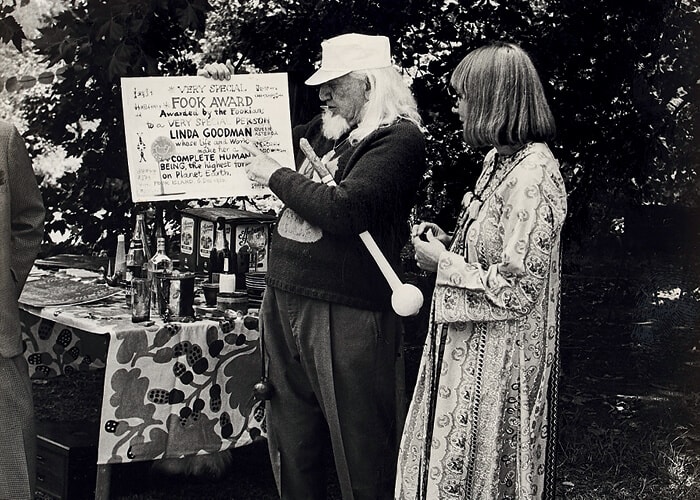 Goodman Gallery founder Linda Givon with artist Walter Wahl Battis. All images courtesy of Goodman Gallery.
Goodman Gallery founder Linda Givon with artist Walter Wahl Battis. All images courtesy of Goodman Gallery.
The year was 1966 and in the same twelve-month period, U.S. Senator Robert Kennedy visited South Africa, Hendrik Verwoerd, the architect of apartheid, was assassinated in Cape Town and Linda Givon’s Goodman Gallery opened in Hyde Park, Johannesburg. In this prescient political context and under a stifling autocratic government, Givon and the Goodman Gallery team actively pursued social and political changes by being an inclusive space and championing protest art. This year we celebrate the gallery’s 50th anniversary, with an extensive programme of celebrations to take place throughout the year. As a tribute to the pioneering work they have done and continue to do, ART AFRICA looks back over the long, illustrious history of one of South Africa’s most resilient galleries. In her interview, owner and director Liza Essers looks to the future while paying homage to the gallery’s revolutionary beginnings, while excerpts from interviews (supplied by the Goodman Gallery from the publication and film titled New Revolutions: Goodman Gallery at 50) with some of the gallery’s most prolific artists, including William Kentridge, David Goldblatt, Sam Nhlengethwa, Kudzanai Chiurai and Pat Moutloa, give context to the gallery’s historical successes.
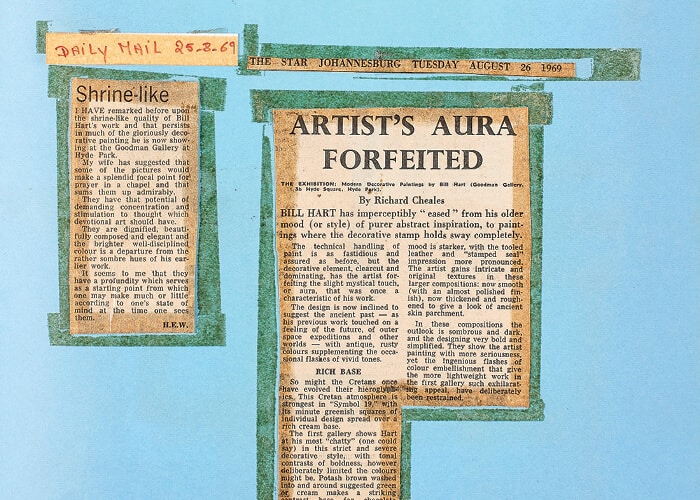 Images from the original archival records of the Goodman Gallery circa 1968/69.
Images from the original archival records of the Goodman Gallery circa 1968/69.
From their debut in 1966, Goodman Gallery proved that revolution was in their ‘DNA’ as they set out to promote the work of artists and activists who had officially been excluded from the South African art canon. Black artists from the Polly Street Art Centre (nurtured under the leadership of Cecil Skotnes) like Sydney Khumalo, David Koloane, Ezrom Legae and Dumile Feni joined the gallery in the first decade after opening, announcing the identity and credibility of modernist black art in South Africa. Other prominent names who joined the ranks at this time included Norman Catherine, Edouardo Villa and William Kentridge.
The second decade proved even more successful for the radical team, with the international exhibition ‘Art Against Apartheid’ that opened in Paris in 1983, organised by the Association of Artists of the World against Apartheid, in cooperation with the United Nations Special Committee against Apartheid and Goodman Gallery. Following on from this came the Ricky Burnett- curated exhibition ‘Tributaries: a view of contemporary South African art’ at the Africana Museum (now Museum Africa) and then ‘The Neglected Tradition: Towards a New History of South African Art (1930- 1988)’ (curated by Steven Sack) at the Johannesburg Art Gallery that exhibited the work of nearly one hundred black South African artists. All of these exhibitions were firsts in many ways for South African artists, many of whom had already been exhibiting with Goodman Gallery for years, bolstering the gallery’s critical clout and the world-class calibre of their artists.
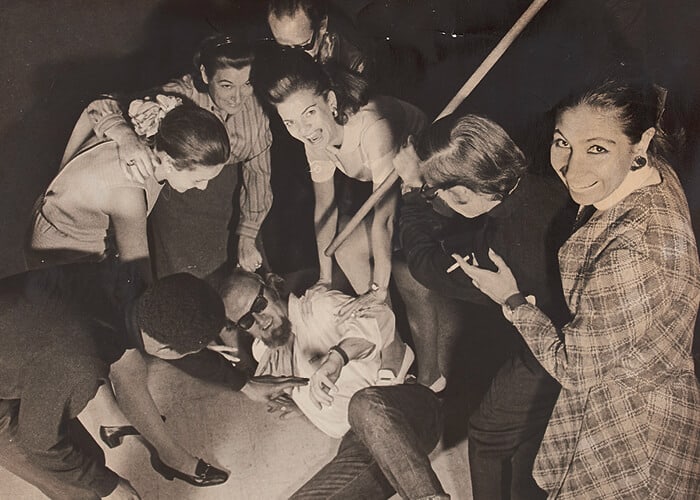 Linda Givon (right) with artists and gallery staff, Johannesburg, late 1960s.
Linda Givon (right) with artists and gallery staff, Johannesburg, late 1960s.
Through a temporary downsizing during the difficult period of political transition in the early 90s, Givon focused on four successful international exhibitions that incorporated artists from other African countries, as well as the inaugural Johannesburg Biennale in 1995 which celebrated the arrival of the “new, inclusive, post-racial SouthAfrica.” In 1997, Goodman Gallery found their new home in Parkwood, Johannesburg and in 2006, they expanded with a second location in Cape Town. In 2007, Liza Essers took over the ownership and directorship of Goodman Gallery. Filling the shoes of a doyenne of the art world proved challenging for Essers, but she rose to the challenge and under her directorship, Goodman Gallery has continued to grow from strength to strength. Incorporating ongoing programmes that pay homage to the gallery’s past while simultaneously looking to a sustainable and inclusive future, Essers has further solidified Goodman Gallery’s position in the complex and fragile ecosystem of the local and international art market.
Liza Essers has curated the gallery’s 50th anniversary exhibition, titled ‘New Revolutions’. The activist spirit and pursuit of social transformation remain key features in the gallery’s plans going forward. ‘New Revolutions’ will open in June 2016 and present prominent local and international artists – all key figures in the past, present and future of the gallery – who will engage with the “idea of perpetual change, alternative independent movements and the reinvigorating of ideology based upon mutable historical realities.” The programme includes stalwarts of the South African art scene “who have shaped the landscape of contemporary art in Southern Africa” (William Kentridge, David Koloane, Sam Nhlengethwa, David Goldblatt, Walter Battiss, Cecil Skotnes, Ezrom Legae, Leonard Matsoso, Sydney Khumalo and Tracey Rose), the best in local, emerging talent (Kudzanai Chiurai, Hasan and Husain Essop, Mikhael Subotzky, Gerald Machona, Haroon Gunn-Salie, Tabita Rezaire and The Brother Moves On), as well as new international partnerships with artists including Sonia Gomes (Brazil), Kiluanji Kia Henda (Angola), Shirin Neshat (Iran), Kapwani Kiwanga (U.S.) and Jacolby Satterwhite (U.S.).
‘New Revolutions’ signifies the gallery’s continued commitment to combatting unequal power structures and socio-political constructs, not only in South Africa, but across the continent, the Global South, the African diaspora and further afield – indeed for all who share this common goal.
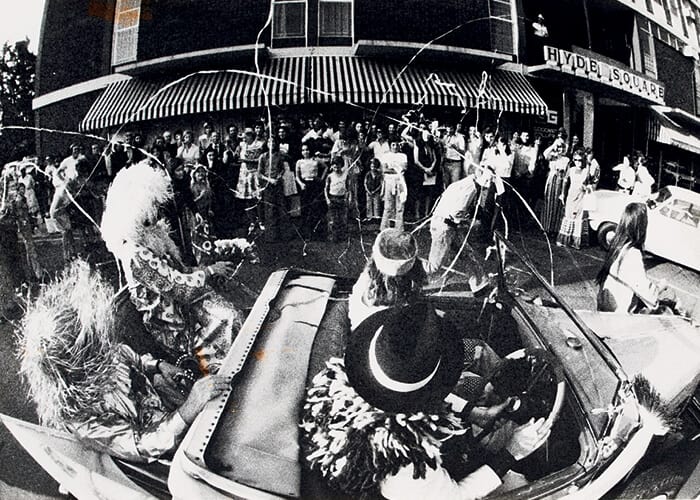 Fook Festival, Goodman Gallery, Hyde Square, Johannesburg, circa 1977.
Fook Festival, Goodman Gallery, Hyde Square, Johannesburg, circa 1977.
ART AFRICA: The upcoming 50th anniversary exhibition is titled ‘New Revolutions.’ In the past, the gallery actively fought for inclusion under an apartheid government and promoted protest art, is the current focus very different? How has the focus changed in a post-apartheid environment?
Liza Essers: The DNA of the gallery comes from a place of protest art, from a place of political art and social change – and I feel it is very important for that DNA to continue. However, when I bought the gallery it only represented South African artists, which made sense for that time under apartheid. Eight years ago, I felt that it was important to shift that focus and to extend it to include both artists from the continent and international artists who were in dialogue with the African context. This also included African-American artists like Kara Walker and Hank Willis Thomas. Looking back, we’ve held exhibitions like ‘Young, Gifted and Black’ (by Hank Willis Thomas) last year and others by artists like Alfredo Jaar, a major international artist whose work clearly fits with the African context.
We’ve also included a number of North African artists because of the divide between North Africa and sub-Saharan Africa – which is really a colonial construct – so for me, at the outset, it was important to begin working with artists like Mounir Fatmi, Ghada Amer and Kader Attia.
Last year, we launched our ‘South-South’ initiative, which looked at the relationship between Brazil and South Africa. The next edition (in January 2017) will look at Angola, Cuba, Mozambique, Brazil and South Africa. The project is about shared histories and in some ways, with my economic background, I’m interested in what drives economics and politics, so the idea of emerging economies and a Global South will be an ongoing focus, as has the curatorial initiative ‘In Context.’ I am very particular about the artists we represent with regards to our curatorial initiatives, our focus in relation to the gallery’s past and our ongoing concern with social change.
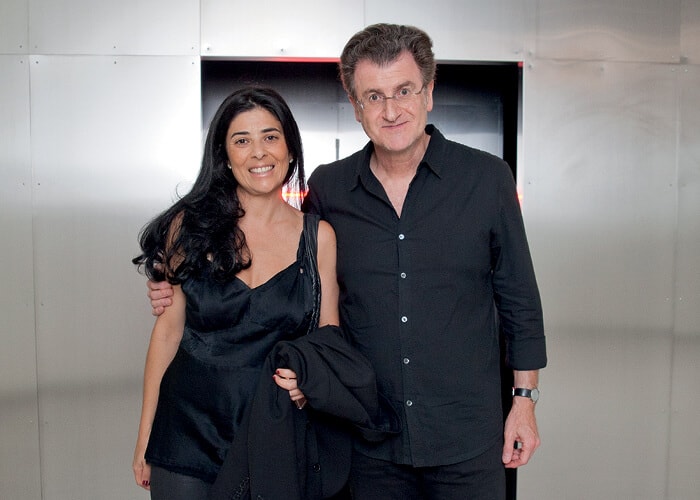 Portrait of artist Alfredo Jaar with Goodman Gallery director Liza Essers at the opening of the installation ‘The Sound of Silence’ at Wits Art Museum, February 2016. Photo by Ricardo Marcus K.
Portrait of artist Alfredo Jaar with Goodman Gallery director Liza Essers at the opening of the installation ‘The Sound of Silence’ at Wits Art Museum, February 2016. Photo by Ricardo Marcus K.
In 2008, you took over the directorship of Goodman Gallery from Linda Givon, who started the gallery in 1966. What were the initial hurdles that you faced, considering Linda’s position as a doyenne of the art world? What would you say are the key differences in the direction the gallery has taken under your directorship?
From an art world perspective, I really had to prove myself as no one knew who I was or where I came from. It was one of the most exciting challenges in my life and I was very proud to have had this opportunity. From a business perspective, it was very challenging as there were no systems – no stock systems, handwritten invoices and so on – so from a purely business perspective it was very challenging putting stock and accounting systems in place. From an art world perspective, the gallery under Linda – who had not been well for a few years – had been kicked out of Art Basel Miami and was on the waiting list for Basel, so my immediate focus was on the international art market and art fairs. Our key priority was to position ourselves and build our profile as a leading international gallery.
Regarding the direction of the gallery, the key difference is that under Linda’s directorship it was solely a South African gallery, whereas under my directorship we’ve become an international gallery with international artists who extend the dialogue beyond South Africa.
You’ve mentioned before that when you took over the gallery, the lack of funding and support for public art institutions was a hurdle in growing the domestic contemporary art industry. For your 50th anniversary, you will be working with major public institutions to include them in the celebrations. How will they be involved in the programme?
The gallery has an ongoing initiative where every year we partner with a public institution and fund a major project that an institution would not normallybe able to fund. Last year we presented Kentridge’s Refusal of Time – which was a major showcase at Documenta 2012 – and we funded it to be at the Johannesburg Art Gallery (JAG) and the Iziko South African National Gallery. This year we presented Alfredo Jaar’s The Sound of Silence film installation at the Wits Art Museum (WAM ). This piece, about Kevin Carter and the Pulitzer Prize-winning photograph he took, has been seen in twenty-six countries around the world. Then, later in the year we are partnering with JAG on ‘Africans in America’ with a biennale-type programme around the city of Johannesburg. So I feel we do have this dual role – as a commercial gallery – to also support the institutions, where we play a kind of ICA role. We have busloads of school children coming to JAG every week; it is almost the only place they come to see contemporary art and where there is also access to books, and I’m very proud of that. I think the art world has become so commercial and, in the drive to make money, lost the essence of what art should be all about. So I feel proud of the way we function as a gallery, where we are still in touch with what art is about and how it can transform society.
I genuinely believe that I have a responsibility to help and fund projects in the museums and institutions and that we’re not a gallery purely driven by the bottom line.
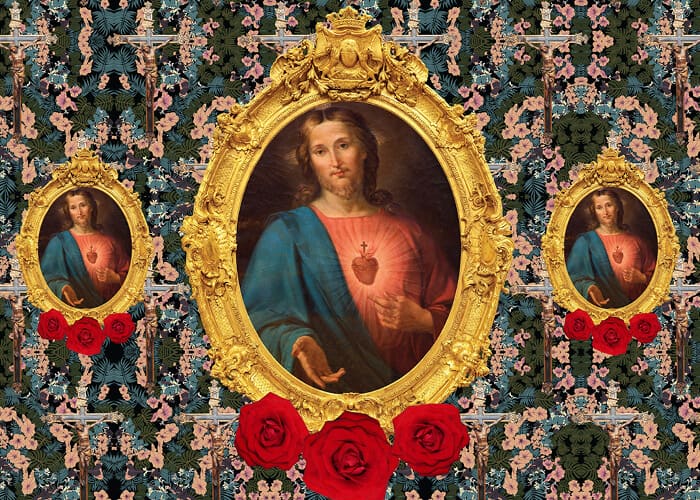 Kudzanai Chiurai, detail of Unidentified White Man I & III, 2016. Digital prints on cotton rag paper.
Kudzanai Chiurai, detail of Unidentified White Man I & III, 2016. Digital prints on cotton rag paper.
You have participated in many of the major international art fairs, thereby making the Goodman Gallery an established name in the international contemporary art world. What portion of your business is driven through these fairs (as opposed to your local gallery programming)? Do you still consider a permanent international gallery an option or has the role of the art fair replaced this?
At least half of the gallery’s turnover is generated at international art fairs, so they’re a very important part of the business model as we rely heavily on international art collectors. In South Africa, there are huge challenges around educating and growing our collector base.
It’s an ongoing priority to grow the local collector base, which is currently very small and I feel that, as a group of galleries and the industry as a whole, we need to play this role. The FNB JoburgArtFair, Cape Town Art Fair and THAT ART FAIR definitely contribute to building the collector base but my concern is that the art fair business model is ultimately about selling space and a lack of quality control in that regard can become a large problem when it comes to building a discerning collector base.
Because there are still so few great galleries in South Africa and on the continent in general, a lack of quality at art fairs can end up confusing audiences, as the local audiences aren’t being educated properly and are being exposed to poor quality.
On the one hand, it’s great that the audiences are being exposed and introduced to contemporary art but, on the other hand, newcomers may be unable to discern between decorative art and really good work amongst the buzz and excitement of an art fair. This makes the education of the market all the more difficult for us as an art gallery committed to conceptual art.
As far as an international space is concerned, it is important – but a year ago, who would have thought the exchange rate would be sitting where it is today? This has obviously had a considerable impact on our plans and, although it is something I still consider, right now the exchange rate is working against us. That said, I don’t think the role of the art fair has replaced our plans for an international presence in the future.
The pricing of work is the other challenge, given that fifty percent of our market is international. At a fair like Art Basel, Miami Beach, collectors think that works priced under ten thousand U.S. dollars can’t be good work. Locally, to price all the works in dollars would be problematic and make it difficult for us to build a local collector base, although certain artists like William Kentridge and Mikhael Subotzky are priced in dollars as they are major international artists, so we unfortunately don’t have a choice but to price them in dollars.
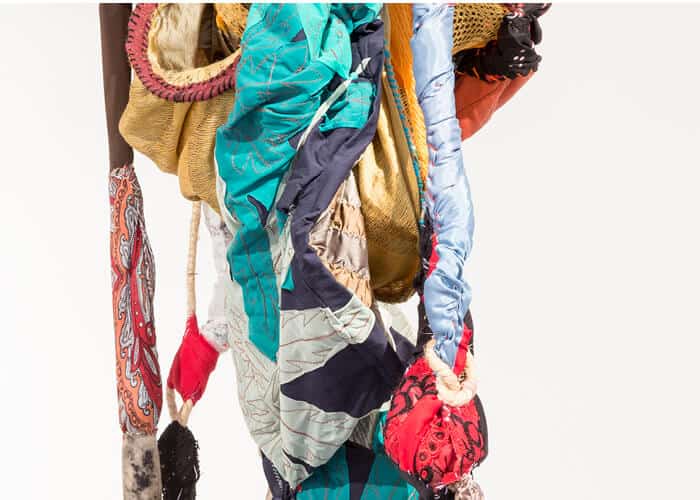 Sonia Gomes, detail of Outro Lugar, 2015. Installation.
Sonia Gomes, detail of Outro Lugar, 2015. Installation.
Please elaborate on the programme and scope of the gallery’s 50th anniversary celebrations?
This year, we have solo exhibitions in our galleries with established key artists such as William Kentridge, Alfredo Jaar and Candice Breitz. We are using 2016 to announce new artists in our stable and you’ll see names like Nolan Oswald Dennis, Tabita Rezaire, Misheck Masamvu and Kiluanji Kia Henda, to name a few, as well as Shirin Neshat, who is doing a major solo show later in the year.
‘New Revolutions,’ our anniversary group show, will be presented in our Cape Town and Johannesburg galleries, as well as on our booth at Art Basel (which will be an extension of the shows in our gallery spaces). We will also host a celebration dinner in Johannesburg (on the 4th of June) with major performances by The Brother Moves On and Nelisiwe Xaba, with a few other surprises too.
Then the ‘Africans in America’ show, in collaboration with the JAG in November, will form part of an international symposium with Harvard, NYU and WITS Universities.
‘Africans in America’ is part of the ongoing curatorial initiative ‘In Context,’ which presents collaborative curatorial projects confronting the dynamics and tensions of place. As I mentioned, the gallery has two other ongoing curatorial initiatives: ‘South-South’ is a title adopted from Brazil’s foreign policy aimed at reinforcing integration between major powers of the developing world, placing common histories and experiences at its core. Thirdly, ‘Working Title’ offers a platform for emerging, new and independant production and thinking.
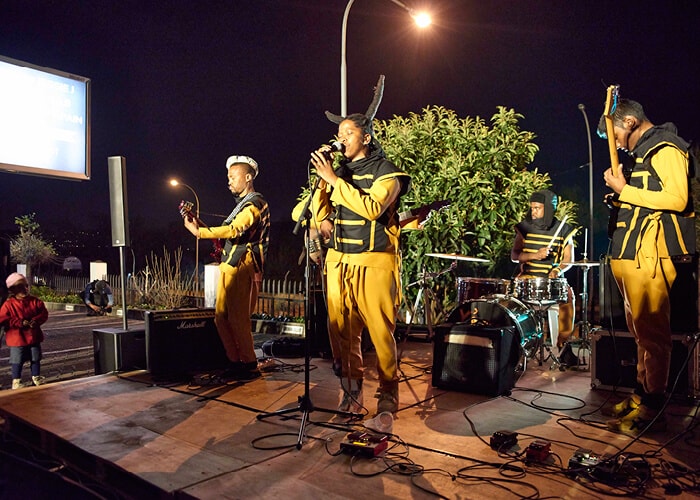 Performance band The Brother Moves On performs ‘The Brother Burns the Bullion’ at Goodman Gallery, Johannesburg for Art Week Joburg 2015.
Performance band The Brother Moves On performs ‘The Brother Burns the Bullion’ at Goodman Gallery, Johannesburg for Art Week Joburg 2015.
What is your opinion on the Africa-focused art fairs – like 1:54 Contemporary African Art Fair (New York and London) and the upcoming Also Known As Africa (AKAA) in Paris – and the trend of established international art fairs having a dedicated or curated ‘African’ focus? Should art from the continent not be included as part of the international art scene without being labelled ‘contemporary art from Africa’?
We have been building the Goodman Gallery’s profile for fifty years and we’re an international art gallery. Although we are very supportive of those platforms, it is important for us not to be pigeonholed as an ‘African’ contemporary art gallery.
Obviously a fair like The Armory Show has a different international focus each year, from China to the Middle East, and now Africa. A lot of the art fairs do that as a business model, but when it comes to Africa what happens next year? It is great exposure – there is huge interest in art from the continent right now – but Africa is often seen as ‘fashionable,’ which makes all this hype not necessarily sustainable. It is more important that we build long-term critical conversations, and that’s what we’re trying to do with our ‘South-South’ and ‘In Context’ initiatives. It is about incorporating the African voice into international art history. Obviously, we have South African and African art history, but those are chapters. There is only art history ultimately and this is what one needs to focus on.



